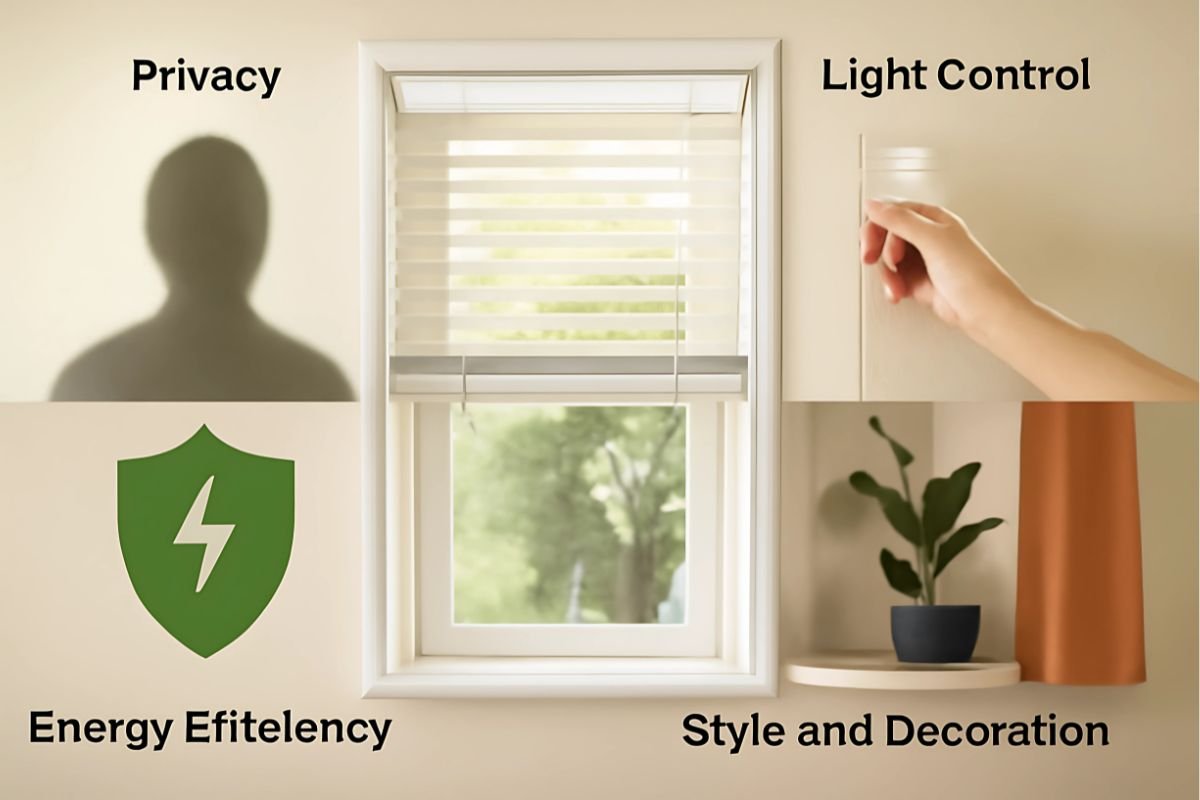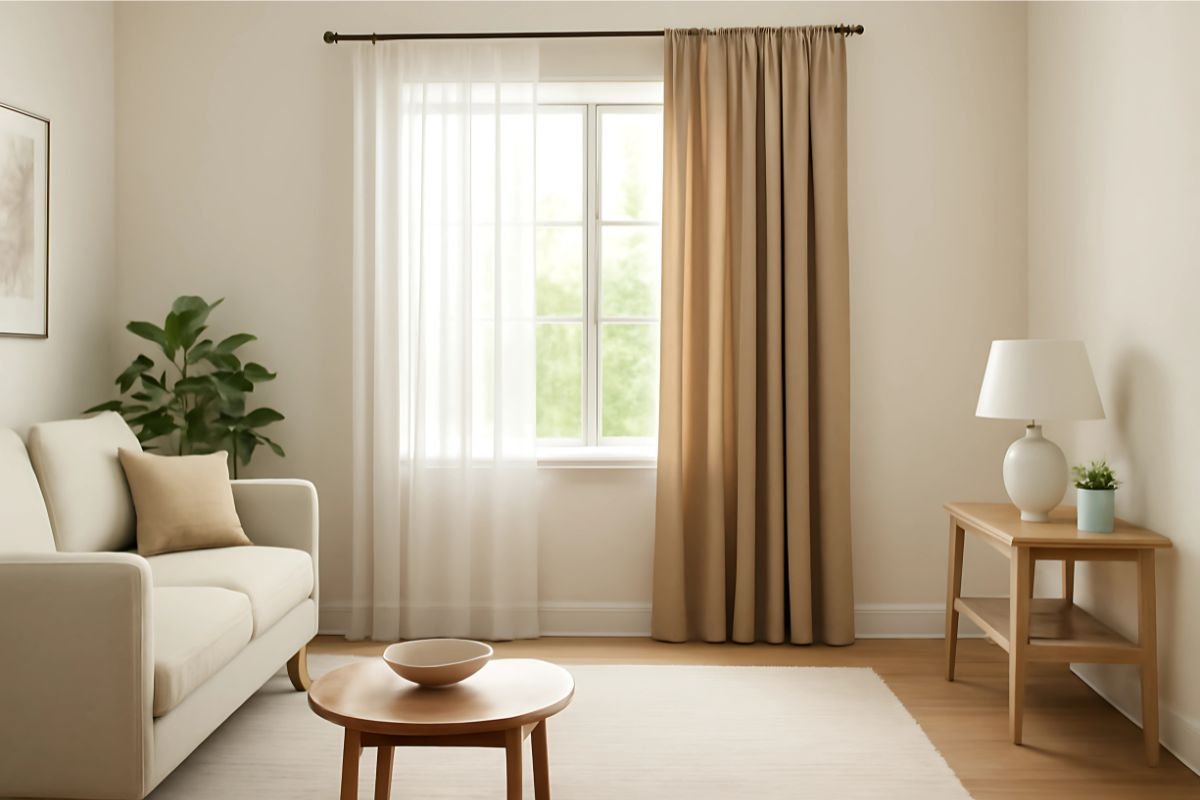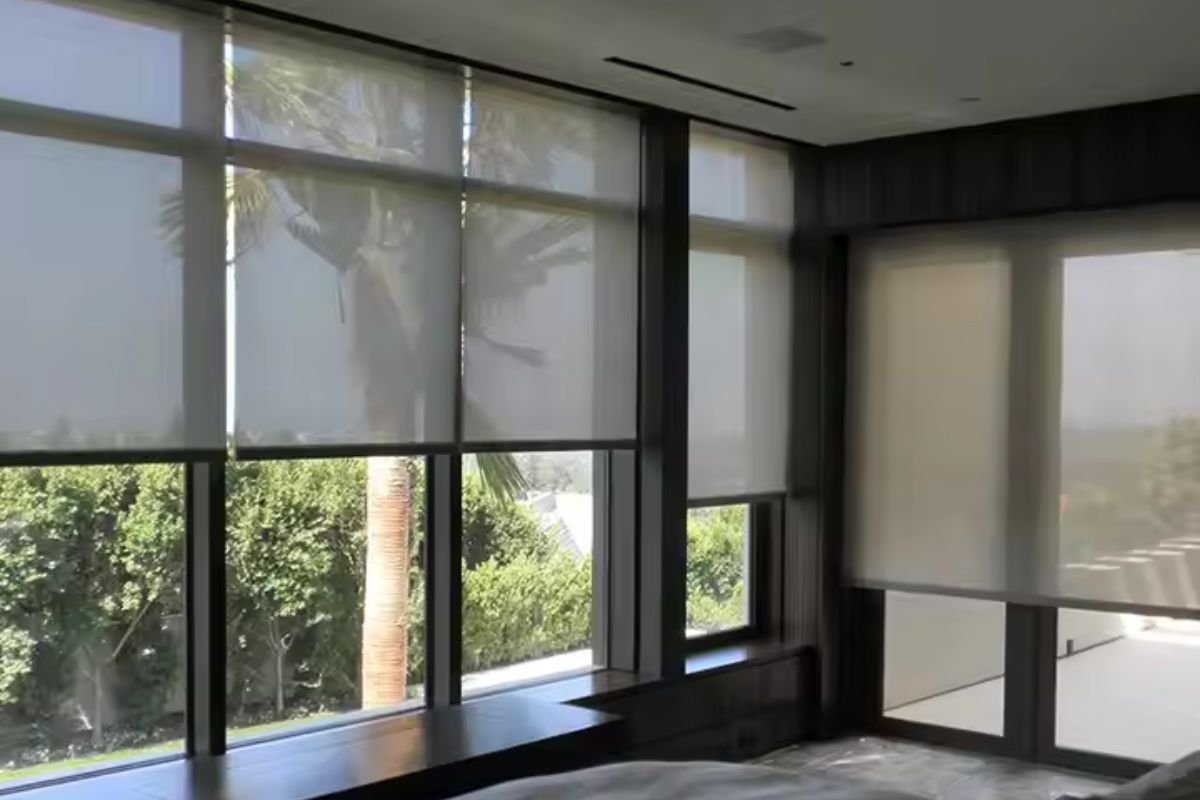Are you wondering how to choose the right curtains & shades for your windows? If yes, then you are right here. The right window treatment can enhance your room’s privacy, comfort, and give you perfect light control. In addition to functionality, you should choose high-quality material and a beautiful design.
You can customise your curtains & blinds to get a perfectly tailored window treatment. Whether you want blackout curtains for complete privacy or sheer curtains, many options are available in Dubai shops & online stores. From this informative blog, you can establish the right balance between function, comfort, and beauty for your window covering.
1. Understand the Purpose of Window Treatments

Before you even think about color or fabric, ask yourself; What is the primary job I need this window treatment to do? Most people have more than one goal, but identifying your top priority is key.
a. Privacy
Are you trying to prevent neighbors from seeing into your ground-floor living room or ensuring total seclusion in a bedroom or bathroom? The level of privacy you need will dictate the opacity of the material.
b. Light Control: Do you want to…
- Block all light? (Think bedrooms, home theaters). This calls for blackout solutions.
- Filter harsh light? (Think sunny living rooms or home offices). This requires light-filtering materials.
- Simply add a decorative touch while letting light pour in? This is where sheer fabrics shine.
c. Insulation and Energy Efficiency
In climates with extreme heat or cold, the right window treatment can be a powerful insulator, helping to lower your energy bills. Cellular blinds and thermal-lined curtains are champions in this category.
d. Style and Decoration
Is your main goal to add a pop of color, a luxurious texture, or a design element that ties the room together? Sometimes, the function is simply to be beautiful.
2. Explore Different Types of Window Treatments
Now that you know your goals, let’s explore the main types of window treatments. Each has distinct advantages.
a. Curtains and Drapes

The most traditional and versatile option, curtains are fabric panels that hang from a rod. “Drapes” typically refer to heavier, lined curtains.
What They Are: Soft fabric panels that bring color, texture, and movement to a room.
Pros:
- Huge variety of fabrics, colors, and patterns.
- Excellent for adding softness and a sense of luxury.
- Can be layered (e.g., sheers + blackout curtains) for ultimate flexibility.
- Thermal-lined options offer great insulation.
Cons:
- Can collect dust and require regular cleaning.
- Heavy drapes can feel bulky in small spaces.
Best For: Living rooms, dining rooms, and bedrooms where you want to add warmth and style.
b. Blinds

Blinds are “hard” window treatments made of individual slats (vanes) that can be tilted open and closed or raised and lowered.
What They Are: Slatted treatments typically made of wood, faux wood, vinyl, or aluminum.
Pros:
- Excellent, precise light control by tilting the slats.
- Durable and very easy to clean (just wipe them down).
- Faux wood and vinyl options are great for high-moisture areas like kitchens and bathrooms.
- Offer a clean, structured look.
Cons:
- Can look stark or “cold” in some design schemes.
- The stack of slats can obstruct the view when fully raised.
Best For: Offices, kitchens, and bathrooms. They are also a great, practical choice for any room with a modern or minimalist aesthetic.
c. Shades

Shades are made from a single, continuous piece of fabric or material that rolls, folds, or gathers to open.
What They Are: A single panel of soft fabric or woven material.
Pros:
- Offer a clean, uncluttered look when raised.
- Roman shades provide the softness of drapes with the clean function of a blind.
- Roller shades are minimalist and budget-friendly.
- Cellular (or Honeycomb) shades are the best for insulation due to their trapped-air pockets.
Cons:
- Less precise light control than blinds (they are either up or down, though some models open from the top down).
- Fabric can be harder to clean than a blind’s hard surface.
Best For: Any room where you want a clean, tailored look. Cellular shades are ideal for bedrooms or drafty windows needing insulation.
d. Shutters

Shutters are rigid, hinged panels with louvers (like built-in blinds) that are permanently fitted into the window frame.
What They Are: A timeless, architectural window treatment often considered a permanent upgrade to the home.
Pros:
- Extremely durable and long-lasting.
- Excellent light control and privacy.
- Can increase your home’s resale value.
- Offer great insulation and soundproofing.
Cons:
- The most expensive option.
- Their permanent nature means they can’t be easily changed with your decor.
Best For: Traditional or farmhouse-style homes, or any space where you want a classic, high-end architectural statement.
3. Think About Material and Fabric Choices for Final Decision
With your goals defined and options understood, follow these final steps.
a. Match the Treatment to the Room’s Style
- Modern/Minimalist: Clean lines are key. Think roller shades, blinds, or simple, solid-colored curtain panels.
- Traditional/Formal: Luxury fabrics and classic structures work best. Consider layered drapes (perhaps with a valance), Roman shades in a rich fabric, or classic wood shutters.
- Farmhouse/Rustic: Natural textures are your friend. Wood blinds, woven wood shades, or simple linen or cotton curtains will feel right at home.
b. Choose the Right Material
- For high-moisture areas like kitchens and bathrooms, choose materials that won’t warp or grow mildew, like faux wood blinds or polyester shades.
- For a bedroom, prioritize blackout fabric or a light blocking lining for sleep quality.
- For a formal living or dining room, fabrics like velvet, silk, or high-quality linen add a touch of elegance.
c. Consider Your Budget
Window treatments can range from very affordable to a major investment.
- Budget-Friendly: Roller shades, faux-wood blinds, and off-the-shelf cotton curtains.
- Mid-Range: Custom-sized blinds, quality Roman shades, and higher-end curtain fabrics.
- High-End Investment: Custom-made drapes in luxury fabrics and plantation shutters.
Tip: Don’t skimp on hardware. A cheap-looking curtain rod can undermine the most beautiful curtains. Invest in a sturdy and stylish curtain rod that complements your decor.
Read Also: Tips for Choosing the Perfect Curtains for Every Room
Conclusion
By following this structured approach, you can move past the overwhelming number of choices and confidently select the perfect window treatment that meets your needs, fits your style, and truly completes your room.




